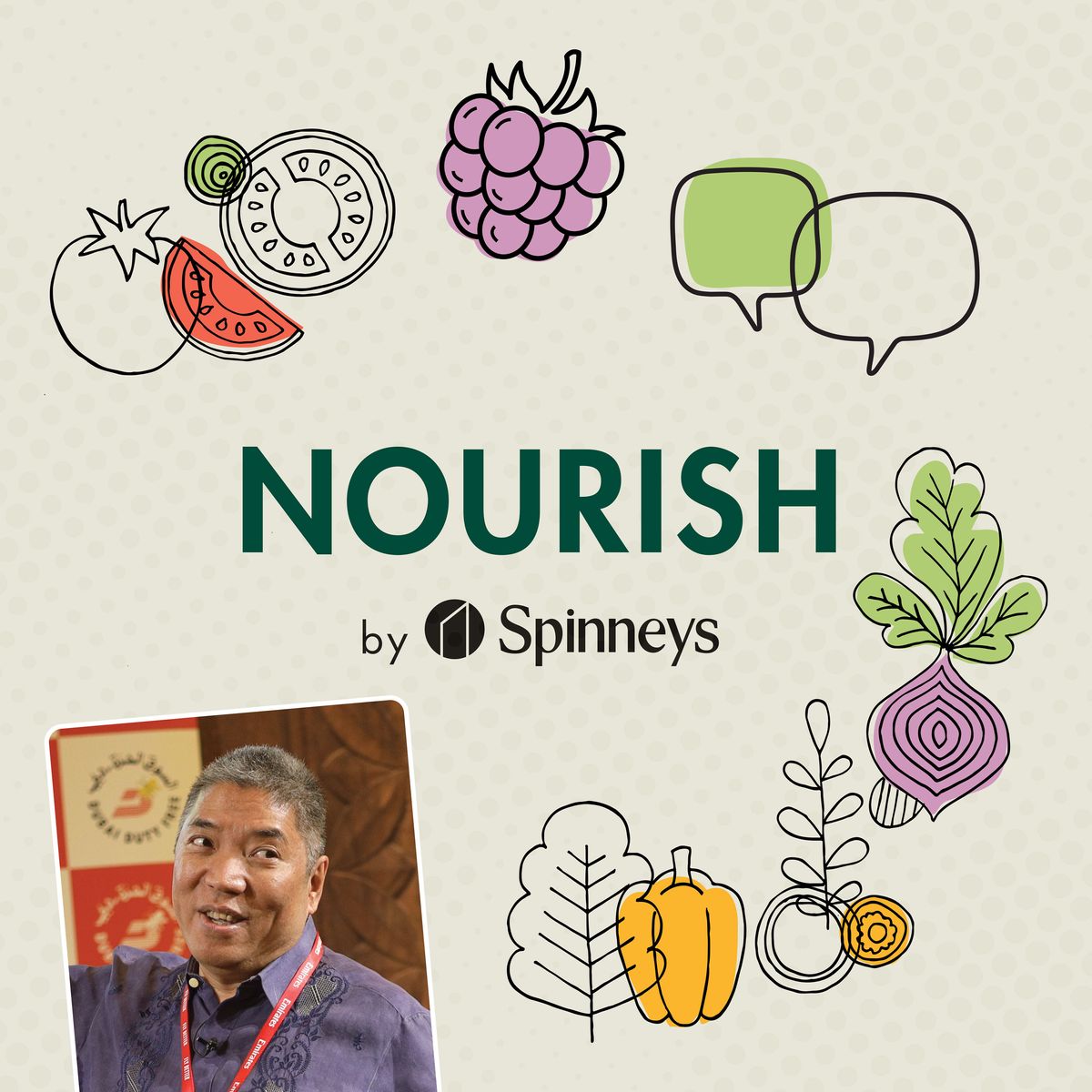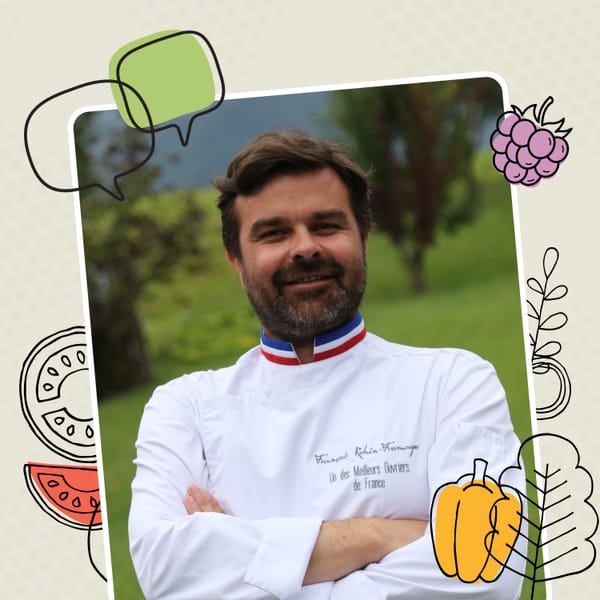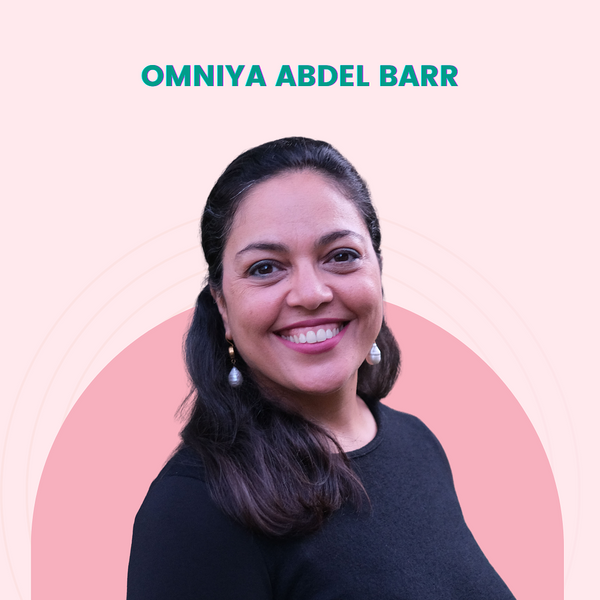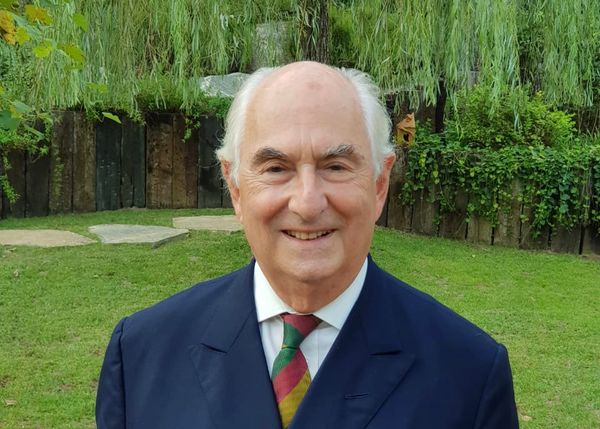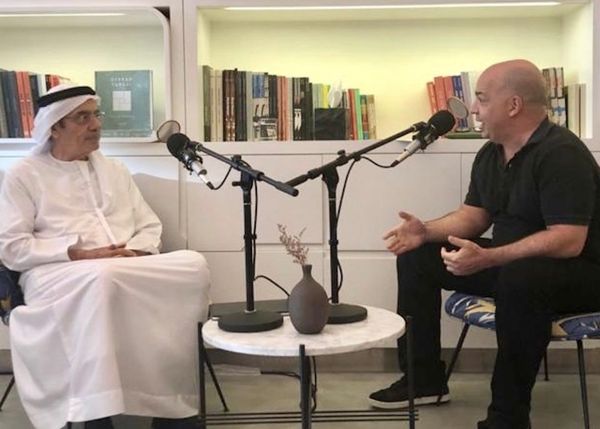This week, co-host Devina Divecha sits down with food historian Ambeth Ocampo, who has been exploring Filipino art, culture, and food going back to the 19th century. This is one for the history & culture lovers, as Ambeth shares nuggets from his extensive research, including about a national hero of the Philippines, Jose Rizal, and his work that spans 35 books and an on-going bi-weekly editorial column in the Philippine Daily Inquirer.
Transcript
[00:00 - 00:22] Welcome to Nourish by Spinneys, the podcast which promises to inspire you to eat well and live well. I'm Devina Divecha. And I'm Tiffany Eslick. Welcome to a space where we hope to nourish your heart and soul. On the show, we chat with leading players in the food community, from farmers to foodies,
[00:22 - 00:43] as well as health and well-being experts. It's all about engaging conversations and fresh ideas. So today we're buckling down for a history lesson, quite literally, with food historian Ambeth Ocampo, who has been exploring Filipino art, culture, and food going back to the 19th century. I caught up with him during his visit for the Emirates Lit Fest a couple of weeks
[00:43 - 01:04] ago, which was brilliant. And Ambeth has published over 35 books with fascinating titles like Banana Ketchup and Dirty Ice Cream. There is nothing dirty about ice cream. Exactly. And that's why this is an episode for which you really should have a notepad next to you because there's so much interesting information. Ambeth also told me about the
[01:04 - 01:29] Filipino palate and how it's evolved and adapted over the last century, how he got started in food history due to one of his teachers, and of course, the meaning behind titles like Dirty Ice Cream. Dirty Ice Cream is the ice cream that in the Philippines, they buy it from an ambulant vendor. And I used to wonder why do people call it dirty ice cream and why do even people
[01:29 - 01:50] buy it? And I found out by looking at the research, I mean, before the war, when commercial ice cream was made available. So the commercial ice creams sort of said, our stuff is cleaner than something that you can buy on the street. And so it stuck on and it became dirty ice
[01:50 - 02:12] cream. But the thing here is that the titles of my books normally come from the lead essay. And this particular book has a number of essays on Philippine food and Dirty Ice Cream happened to be the lead essay. But the thing there was the research about the ice cream was not
[02:12 - 02:39] so much that it was dirty, but it led me to dig up. I mean, the Philippines is the tropics. So there was a time when there were no refrigerators or freezers. So how did they make ice cream? And I found out that in the 19th century, ice was sourced from a lake in Boston called Wenham Lake. And it was reputedly the most, the clearest, cleanest, crisp water. It was
[02:39 - 02:59] the only ice that Queen Victoria would take. And so what they did in the States was they would cut off all blocks of this ice, load them into ships and send them all the way off to India. And one of the stopovers, of course, was Manila. And so every month this
[02:59 - 03:25] ice ship came, brought in some ice. And I guess with the ice, they first add ice to water, they had sherbet. And later on, of course, with the commercial ice plant, that's when the ice cream came. But can you imagine how much of the ice actually melted on its way to India? I guess there was, I guess they sold cold water at some point. So that was
[03:25 - 03:47] it. So the ice cream essay is actually about not only how ice came to the Philippines in the 19th century, but it connects to other things. The Philippines has another ice street, which is called Halo-Halo, which literally translates into mix-mix. And of course, we
[03:47 - 04:15] didn't have shaved ice. So again, most people think it's a Philippine food. But when I lived in Japan, I realized that they have this shaved ice street called Kakigori in the summer. And that's when I realized that the Halo-Halo, which Filipinos think is distinctly their own, is actually a cousin of the Japanese Kakigori. And like the stewed beans, candied
[04:15 - 04:37] sweet potato, and other things that go into this Halo-Halo were made by Japanese before the war. So again, you see the Japanese roots of something that people think is Philippine. So I've been studying, like in my undergrad history classes, I always start the semester
[04:37 - 04:59] with food. I ask my students to write an essay on food from their childhood. That's always the first essay. And it's an essay in memory. So people sit down and they remember. And I let them read an excerpt from Proust, In Search of Lost Time, about the man eating
[04:59 - 05:20] a madeleine. And this madeleine bringing out a flood of memory. And so when the kids come and we discuss their essays, they not only describe the food of their childhood, but then they connect it and they see that food is not just tastes and textures, it's memory.
[05:20 - 05:43] And their childhood food, whether it's food they hated or food they liked, actually says a lot about where they came from and why they are the way that they are. And so when we look at that, and then we start to look at the food, and I tell them that history does not always come from an archival document or an old book. You can actually read it from
[05:43 - 06:04] food. So something that is every day. It's in your face and yet we see but we don't notice. And so like, you look at dirty ice cream, you look at Halo-Halo, and that's when you will realize all the other influences that made Philippine food what it is. Yeah. And you learn so much about, you know, like you say, not just the food, but also
[06:04 - 06:30] a country or a place through it. Through it, yes. Which is fascinating. And it's actually fascinating because like, if you ask Pinoys, I guess you have friends who are Pinoys, and you ask them what the national dish is, and they'll probably tell you it's adobo. And they often think that adobo is Spanish because it comes from the Spanish word adobar, which means to stew or pickle in vinegar. But when we did the research,
[06:30 - 06:52] we realized that when the early Spanish came, they were given this dish and they did, the idiots forgot to ask the person what is this dish called. So they said, it's like adobo, it's stewed in vinegar. So adobo is not the name of a dish, it's actually a cooking process.
[06:52 - 07:18] And so now we're sort of rewriting, reclaiming the past and saying, you know, what you formerly thought was Spanish is actually Filipino. It was already there. And when you think about it, stewing in vinegar means that they cooked it not for taste, it was meant for preservation. So in an age without a refrigerator, that's where you have adobo, which is stewed in vinegar,
[07:18 - 07:41] you have dried fish, salted fish, fermented fish paste, you know, so all of these things actually show us a process. So like in the book, there's also something called stinking fish. And this came because the national hero of the Philippines, Jose Rizal, who was shot
[07:41 - 08:02] for two novels, which nobody reads. The thing here is, if you read the novels, which were written in the 19th century, there's a lot of food in it. And it describes different types of food and how this food is cooked. But Rizal was a scholar. So in 1888, he went
[08:02 - 08:30] to the British Library, and he dug up a book. It's a 17th century book on the Philippines, which he said, I want to see what the Philippines was like before the Spanish came. And the 17th century author said, oh, the Filipinos, they eat venison, they eat pork and beef and fish, etc. And then he says, you know, and they eat rotten food. And he says, and these
[08:30 - 08:54] people know that the food is rotten because their food stinks. So that's what's written in the 17th century. And when Rizal read this, 100 years later, he was so incensed. And so he wrote a very long footnote saying, no, we don't eat rotten food. This is actually fermented fish paste. It's called bagoong. It is a delicacy in my country. So he says,
[08:54 - 09:15] you have to, you can't diss other people's food, you have to put it in context and understand us for what we are. So in a sense, Rizal, just by talking about answering this guy from 100 years before, was actually defining not just the food, but what it meant to be Filipino.
[09:15 - 09:42] So that has been one of my great influences. I actually got into food because my undergrad English teacher was the pioneering food historian of the Philippines, Doreen Fernandez. And in my undergrad days, just to show you how ancient I am, I had her in 1980. And in 1980,
[09:42 - 10:07] it was the first time that McDonald's opened in the Philippines. So she says, we will go to this branch, you come with me, and we will buy, she bought 25 burgers, 25 fries, 25 fizzy drinks, and we brought it all back to school because she was a food critic. So 25 students had their first taste of McDonald's Philippines food. And then we discussed it. So she wanted
[10:07 - 10:27] to see, was the texture the same, is the quality the same? And so I saw how she worked. So we would, later on, we would go outside of Manila. I mean, that was one of my, I wouldn't say traumatic, I'd say they were, it was a formative experience. We went to a place three
[10:27 - 10:49] hours north of Manila, very early in the morning and said, what are we going to do here? Oh, we're going to document food. And I said, okay, fine. So we got there and I said, where's the food? And we were brought to the back of this house. And there was a goat. I'm really scared now. And she says, that will be our food. I said, it's alive. So again, so she documented the
[10:49 - 11:17] whole process from the poor lighting, how it was slaughtered, cleaned, etc. And how it was made into different dishes. And she says, look at these people, they are able to use every part of the goat, except the horns and the hooves. And so I saw how this live thing became five different dishes. And so that showed me, again, this whole process
[11:17 - 11:41] of cooking and why goat is eaten in one part of the Philippines and not in another part. Remember like the people in the south in a place called Bicol is the only place where you'll have hot food in the Philippines. They eat chili like they would eat peanuts. And they're the only ones who are like that. So well, they live beside the volcano. So there
[11:41 - 12:05] must be a connection somewhere. But that's it. So the Philippines is a complicated country. It's a young nation with a long history. There are over 7,000 islands and over 150 different ethnolinguistic groups. And each ethnolinguistic group has its own distinct cuisine. And so
[12:05 - 12:30] sometimes I think the whole idea too of nation is how do you make a nation out of a 7,000 archipelago with 50,000 adobo dishes. So it must be difficult. So it's one of the things I wish that in my books, I mean, I like people to see history from different angles. And
[12:30 - 12:53] food happens to be just one of the angles that we don't look at. I'm sorry I talk too much. No, no, we like that. But now I'm going to ask you about the other dish that's mentioned in the title, banana ketchup. Why is that? Okay, yes. Banana ketchup. It was invented by a woman during World War II. She was a
[12:53 - 13:17] food technologist. Her name was Maria Orosa. And posthumously, we sort of look back at her and see how this lady, by doing food technology during the war, was able to save many lives because things that they would throw away, she made into food. So her most memorable
[13:17 - 13:43] invention, of course, was banana ketchup, because there was scarcity of tomatoes. And she says, why does ketchup always have to be tomato? Why can't we use banana? And so it's a Swedish thing. And if you have tried, I guess there's Jollibee here in Dubai. And Filipino spaghetti, of course, is made with banana ketchup and hotdogs. So I'm sure the
[13:43 - 14:07] Italians will have a fit wondering why. And so this whole idea of appropriation. But I'd like to think that for Filipinos, they don't like Italian spaghetti. They find it too sour because of the tomato base. And I'd like to think that in the modern world, while we barriers
[14:07 - 14:31] have broken, so we don't think in terms of nation, we think of a global community. So while the Italians will probably say, you know, it's appropriation to get our spaghetti. But the thing there is, spaghetti came to the Philippines, of course, it came in its Italian form. But the Filipinos adapted it using the ingredients that were available
[14:31 - 14:57] to them. And in a sense, they have adapted it, indigenized it, and they made it their own. Like when we say Singaporeans or Filipinos speak English, it's not English that they would speak in London or in New York. So it's a particular thing. And I'd like to think that in food, we see not just a mix of cultures, but adaptations that make food bigger and
[14:57 - 15:23] wider than we would want it to be. I mean, I taught a course on food in Philippine culture in Japan. And of course, for me, Japanese cuisine is the highest form of food that you can get because the Japanese eat with their eyes. It's a complete sensory experience,
[15:23 - 15:48] you know, beautiful tableware. I mean, you get the sushi, you have the taste of the fish, which is from the sea, you have rice, which is from the land, you put it in your mouth, and there's a bit of wasabi that will kick. So it's a total sensory thing. And so of course, I taught this in Tokyo. And I told my students, can you try Philippine food, etc. And of course,
[15:48 - 16:15] when the reports came, I was horrified because the kids said, your food is brown, it's oily, it's unhealthy. And I said, Oh, my God, it's not that way. Where did you get it? So of course, they went to, you know, some not real restaurants in Japan, they're usually little bars where the women cook Philippine food and sell it. So it's not exactly Philippine
[16:15 - 16:42] food you would serve to a guest. The others who were not too, they watched a YouTube video, so they cooked adobo by themselves. And of course, when it came out, I mean, it's oily and brown. And then I said, no. So I said, no, I have to redeem myself. And then they said something like, can you have something called champurrado? I said, yes. And this is chocolate rice. And for
[16:42 - 17:07] them, it was totally unthinkable. Yuck. They said, you know, chocolate and rice. And I said, yeah, but you have cocoa crispies in milk, right? But of course, they couldn't. It was beyond their imagination. Fortunately, the Philippine ambassador in Tokyo over dinner, I told him what my students felt. So he says, what time is your class? So he's his cook. The next class sent,
[17:07 - 17:30] you know, proper noodle dish. They sent dried mango. They sent yam ice cream. Of course, the kids were, oh, this is so nice. And I say, yeah, because this comes from a house. This is not normal street food that you will get. So again, it was something that people get to understand
[17:30 - 17:50] cultures through the food that they are eating. We'll be right back with Ambeth and some of his favorite dishes and what nourishes his soul. That's right after this short break. Stay with us. Welcome back. I'm Devina Devecha and you're listening to Nourish by Spinneys and my
[17:50 - 18:12] conversation with Ambeth Ocampo. Do you find that even now there's a lot of this misconception about what Filipino cuisine is or tastes like, you know, and why do you think that is? Because I feel like yeah, it's a bit of a problem. Like I think it was last year, our Department of Trade decided that
[18:12 - 18:37] just like, I mean, when you think about it, you know, the sudden international emergence of say, Thai food or Korean food, it's because their governments really push this. Yeah, it's food diplomacy. And they defined it. So in the Philippines, they said, we have to define what an adobo, I mean, like a Tom Yum from Bangkok, they know, you know, exactly what it
[18:37 - 18:59] tastes like. A sushi cannot be a sushi if it doesn't have the particular flavor. So our Department of Trade made the mistake of saying, why don't we standardize the adobo? And there was this uproar, how dare you touch my grandmother's adobo? I was saying, it's not really standardizing,
[18:59 - 19:21] but defining what an adobo should be, how much, because again, even an adobo, the staple there is the vinegar. But there are places where they use soy sauce. There are places where they don't. There are places where the adobo has a lot of sauce. There's places where the adobo is dry,
[19:21 - 19:42] and it's almost fried. So again, with all of these different, and I like to think maybe because again, it's an archipelagic country with 7,000 islands, each island very protective of its own cooking. So I like to think that maybe one day we should really define it. But again,
[19:42 - 20:06] it became a touchy political and social issue. So I think our trade industry sort of, you know, stepped back. But I said, maybe if you define it well, or we explain why we are doing this, then we can get somewhere. So I'd like to think that Filipino identity is tied up very much
[20:06 - 20:28] with its cuisine. But until today, we're still digging it up. We're still trying to find out what it is that makes Filipino food what it is. And I like to think the clue there is, is like Filipino spaghetti with banana, ketchup and hotdogs. It is how Filipinos like particular
[20:28 - 20:53] food. And maybe that's how we define not just your cuisine, but your identity as a nation. Yeah. I want to ask you a question that you pose your students. If you had to write an essay about a childhood memory related to food, what would you write about? That's a difficult, I never thought of it that way. Sorry about that. No, there's, well, I guess it's the food that I had in my grandmother's house. And
[20:54 - 21:17] it was only actually recently that my cousins and I realized what it was to grow up. This is my father's side of the family. We would go every Sunday until my grandparents died. And I was about 18 or 19 when they passed away. But my father's family, they're a big family. They had 10
[21:17 - 21:42] siblings. And I have cousins who there's 10 in the family, eight in the family. So we would go every Sunday to my grandmother's house. And it's only when we think about it today that she served at least 100 people every Sunday. That's a party. And over the years, and it's not that, I mean,
[21:42 - 22:04] I have 75 cousins. So 75 cousins plus 10, 20 uncles, that's 100. And then of course, it's not just you, you have to feed the staff, you have to feed the baby minders, the drivers. So they fed at least 100 people every week. And I said, how did they do that? And especially when we grew older,
[22:04 - 22:26] and we had nephews and nieces, so that multiplied to something like 200. So there was particular food that we liked. And this was run by a spinster aunt. And shortly before she died, she told all of us, on Sunday, please come early. And can you bring all of your cooks here? Because I want
[22:26 - 22:48] your cooks to learn the food that you grew up with. So we all brought our cooks and they made the things. One was an adobo, one was a pork and chicken stew. So all the things that we liked as children, they learned. And I remember my sister's cook and my cook were sort of laughing when we
[22:48 - 23:14] were on our way home. They said, you know, we saw you enjoying the food. Of course, I enjoyed that since I was a child. And then they said, do you know that their kitchen is not as clean as ours? And they said, do you know that they handled the food with their hands? So I was horrified by this. But again, it was the food that I grew up with. So the next, after two, three weeks, my cook tried
[23:14 - 23:36] all of it. So she got it perfectly. So I told my aunt, now I can have the food from my childhood, but I'm almost sure that my food is cleaner than yours. But it was that. So we had, our favorite was, it's like a spring roll, a sweet spring roll with banana in it. So it's
[23:36 - 24:02] banana and jackfruit. And we used to wonder, for example, how come it's crunchy? So even if you bring it home for two, three days, it remained crunchy. So we were all wondering, is it because they wrap it in newspaper? Is it because they put it in a basket? And so when I asked my cook, how come this is crunchy after three, four days? This spring roll is crunchy. And then she says,
[24:02 - 24:30] do you know how much sugar they use? They said, you'll get diabetes from eating this. And that's when we realized it was crunchy because it was covered with caramelized sugar. So they put a whole kilo of sugar in this thing. And you would never notice. We'd eat more than three of those. So I guess we're all diabetic in that family. But again, it's that. I often tell my students,
[24:30 - 24:52] we often identify what is the most hated childhood food. So it's always bitter gourd. We call it ampalaya. The second one is okra, which is disgusting because it's furry on the outside and slimy inside. And then we ask ourselves, why is it? Is it nature or is it God? Why is it that
[24:52 - 25:15] food that tastes bad is good for you? Like vegetable and things that taste good are bad for you, like chocolate, ice cream, and a spring roll with caramelized sugar. So we talk about that. So what defines what we like, what we don't like, and it leads on to many other conversations.
[25:15 - 25:38] It does. It really does. You obviously write so much more than things related to food. You're a historian. And I was reading about some of the other books you've written. You've written about Rizal as well. What are you working on now? What's next for you? Well, the newspaper columns continue. That's what I keep telling people who ask me what my
[25:38 - 26:04] writing process is. I often tell them, don't believe what writing workshops tell you, that you need the right pen, a blue moon. I say, no, the only inspiration for me is the deadline. Twice a week, I have to produce something, whether I like it or not, whether it's good or not. And if I did not have the bi-weekly deadline, I would not have had the body of work that I have.
[26:04 - 26:28] So what am I working on now? I'm doing a number of things. One is I want to do my mother's cookbook. When she died, I mean, when I first traveled abroad in the 80s, this was the age before they had instant Philippine, because now you can buy instant Philippine food. What do you mean instant?
[26:28 - 26:52] If you want to do a sinigang or something, so it comes in a sachet. Or we have this sour, it's like a tom yum. It's a sour soup called sinigang, which is made of tamarind. But today, you can buy it in a conure cube. And no one does the tamarind anymore. So our tastes have changed.
[26:52 - 27:15] But my mother, when I first traveled abroad, she made, she typed out a survival recipe book for me. So how would you replicate? I was doing, I was a postgrad student in London. So how can you do a sinigang without tamarind? So she says, so you have to use lemon and tomatoes as a souring agent.
[27:15 - 27:40] You don't have milkfish, you can replace it with a trout. And so she did this. All the food that I knew, she recreated using ingredients I would find abroad. And when she died, we found out, she left a little wooden box with all her recipes that were typewritten. And then if there were
[27:40 - 28:07] notations like this has been kitchen tested, this one is not. And so it's amazing because we're able to replicate it. And shortly before I came to Dubai, I was doing research in the Ateneo University. There's a 19th century woman who fed Jose Rizal. Her recipe books are in the archive. And these
[28:07 - 28:27] recipe books are so interesting because it tells, she was cooking in 19th century Paris, she was cooking Philippine food. So like sotanghod, which is a vermicelli and chicken dish. She would not only write what the ingredients were and how it was cooked, on the margin, she would write the
[28:27 - 28:54] names of the people who ate it. So like, on this day, I cooked, this recipe makes for 10 people. And the 10 people happened to be, then you look at the list, Jose Rizal and everyone else. So I said, this is wonderful. We'll be able to taste what they ate in the 19th century. But unfortunately, her weights and measures, we cannot understand. So like, she makes, she says,
[28:54 - 29:17] one makes bandejado, which is a platter. But what is a bandejado? How big is that? And so we realize, I mean, the French are very, the Filipinos cook in the American way, it's cups and teaspoons. But I like to think the French are very precise. They do it by weight. So everything,
[29:17 - 29:44] it looks like, you look at the recipes, it's like your high school science experiment. 30 grams of this, 20 drops of that. And I guess that's why it's replicable. So when I was looking at this old cookbook and my mother's cookbook, now you see how important weights and measures and kitchen testing is. So it will be, again, I like to think that food has to be replicable, because it is part
[29:44 - 30:06] of people's lives. And the difficult thing here is when you're remembering a dish, how can you fight with nostalgia? So it's a dish you're remembering from your childhood, unless you have a kitchen tested thing, you will not really get it the same way all the time. So
[30:06 - 30:32] again, these are the things I'm working on. So I'd like to memorialize my mother and do her best recipes and see what her secrets are. For many years, I was an examiner in our foreign service. And I used to tell the foreign service that all our diplomats before they are stationed
[30:32 - 30:53] should all know how to cook. Because when you go abroad, part of your diplomacy is being able to serve the food of your country. So they must learn to cook adobo, of course, but then they died because their one exam was like, how do you cook a sinigang from scratch? Because again,
[30:53 - 31:17] they cook it from a conorcue or a sachet. But I said, you must know how to cook it from scratch. And so again, it's going back to the past, the past and the present moving together and making food what it is. And I guess that's what makes it an exciting adventure. So it's not
[31:17 - 31:43] really my line. There are now very good food historians in the Philippines, but it has always been of great interest to me to see food on your tongue, to see food in the palate, in the palate, to see how different countries are defined by their food. How food comes from
[31:43 - 32:05] geography. It's what it is. So like one of the things we did, which nobody used to do was, I looked at the old 17th century dictionary. So we gathered all the food terms. And then we found out that the largest number of food references in the old Spanish Philippine dictionaries was fish.
[32:06 - 32:31] And the second one was rice. And obviously it shows you fish because it's an archipelagic country, rice because it's the stable. So again, all these things come together to help us understand the way that we are and hopefully the way that we can be. Oh, that's a lovely thought. Thank you for sharing that. I have one more question for you,
[32:31 - 32:55] which is something we ask everyone on this podcast. What is it that nourishes your soul? I'm just asking you all the tough questions today. Food from my childhood. So I guess it's that. I mean, all of us remember a childhood food and every childhood food is connected with a parent, a grandparent, a nanny. And I guess that's
[32:56 - 33:23] a food and memory that nourishes you the rest of your life. It's there the whole time. And unfortunately, we go through life seeing things but not noticing. And as a historian, in the work that I do, I like people not just to see but to notice. And so what is it that nourishes me? And I think it is what nourishes all of us. It's the food from our childhood.
[33:23 - 33:43] I love that. Thank you. Thank you. So is that the case for you too? The deadline being the motivation to get the writing done? So I would say when I started my career, it wasn't necessarily the case. But now there's definitely something about a looming deadline that always makes my creative juices flow.
[33:43 - 34:03] This episode was brought to you by Spinneys and is hosted by me, Divina Divecha and Tiffany Eslick. We're produced by Chirag Desai and artwork is by Michelle Clements and Gihane Youssef. You can follow Spinneys on Instagram, Facebook and TikTok for more and visit us at spinneys.com where you can shop for fresh produce in a variety of local and exclusive products.
[34:03 - 34:13] We'll be back in two weeks with our next episode where we chat to Chef Carmen Rueda Hernandez of Brix in Dubai. Talk to you then.



